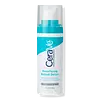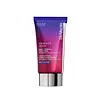What's inside
What's inside
 Key Ingredients
Key Ingredients

 Benefits
Benefits

 Concerns
Concerns

 Ingredients Side-by-side
Ingredients Side-by-side

Water
Skin ConditioningPropanediol
SolventDimethicone
EmollientCetearyl Ethylhexanoate
EmollientNiacinamide
SmoothingAmmonium Polyacryloyldimethyl Taurate
Emulsion StabilisingDipotassium Glycyrrhizate
HumectantHydrogenated Lecithin
EmulsifyingPotassium Phosphate
BufferingCeramide NP
Skin ConditioningCeramide AP
Skin ConditioningCeramide EOP
Skin ConditioningCarbomer
Emulsion StabilisingCetearyl Alcohol
EmollientBehentrimonium Methosulfate
Dimethiconol
EmollientLecithin
EmollientSodium Citrate
BufferingRetinol
Skin ConditioningSodium Hyaluronate
HumectantSodium Lauroyl Lactylate
EmulsifyingCholesterol
EmollientPhenoxyethanol
PreservativeAlcohol
AntimicrobialIsopropyl Myristate
EmollientCaprylyl Glycol
EmollientCitric Acid
BufferingTrisodium Ethylenediamine Disuccinate
Pentylene Glycol
Skin ConditioningPhytosphingosine
Skin ConditioningXanthan Gum
EmulsifyingPolysorbate 20
EmulsifyingEthylhexylglycerin
Skin ConditioningWater, Propanediol, Dimethicone, Cetearyl Ethylhexanoate, Niacinamide, Ammonium Polyacryloyldimethyl Taurate, Dipotassium Glycyrrhizate, Hydrogenated Lecithin, Potassium Phosphate, Ceramide NP, Ceramide AP, Ceramide EOP, Carbomer, Cetearyl Alcohol, Behentrimonium Methosulfate, Dimethiconol, Lecithin, Sodium Citrate, Retinol, Sodium Hyaluronate, Sodium Lauroyl Lactylate, Cholesterol, Phenoxyethanol, Alcohol, Isopropyl Myristate, Caprylyl Glycol, Citric Acid, Trisodium Ethylenediamine Disuccinate, Pentylene Glycol, Phytosphingosine, Xanthan Gum, Polysorbate 20, Ethylhexylglycerin
Water
Skin ConditioningTrimethylolpropane Tricaprylate/Tricaprate
EmollientCaprylic/Capric/Myristic/Stearic Triglyceride
EmollientCaprylic/Capric Triglyceride
MaskingGlycerin
HumectantMyristyl Nicotinate
Skin ConditioningDimethicone
EmollientCetearyl Alcohol
EmollientBis-Stearyl Dimethicone
EmollientPentaerythrityl Distearate
EmulsifyingAloe Barbadensis Leaf Juice
Skin ConditioningIsosorbide Dicaprylate
Skin ConditioningHydrogenated Ethylhexyl Olivate
EmollientGlyceryl Stearate
EmollientStearoxymethicone/Dimethicone Copolymer
EmollientCetyl Palmitate
Emollient1,2-Hexanediol
Skin ConditioningRetinal
Skin ConditioningRetinol
Skin ConditioningBidens Pilosa Extract
HumectantAcetyl Hexapeptide-8
HumectantBeta-Glucan
Skin ConditioningAvena Sativa Kernel Extract
AbrasiveOryza Sativa Bran Extract
Skin ConditioningGlycine Soja Seed Extract
Skin ConditioningAstrocaryum Murumuru Seed Butter
EmollientGossypium Herbaceum Seed Oil
Skin ConditioningButyrospermum Parkii Butter
Skin ConditioningHelianthus Annuus Extract
EmollientHydrogenated Olive Oil Unsaponifiables
EmollientLinum Usitatissimum Seed Oil
PerfumingRosmarinus Officinalis Leaf Extract
AntimicrobialBacillus/Sea Salt Ferment Filtrate
Skin ConditioningSalix Alba Bark Extract
AstringentAdenosine
Skin ConditioningSodium Hyaluronate
HumectantZingiber Officinale Root Extract
MaskingHydroxyethyl Acrylate/Sodium Acryloyldimethyl Taurate Copolymer
Emulsion StabilisingCeteareth-20
CleansingBisabolol
MaskingPolysorbate 20
EmulsifyingIsohexadecane
EmollientLactic Acid
BufferingMethyl Methacrylate/Glycol Dimethacrylate Crosspolymer
Ascorbic Acid
AntioxidantPropyl Gallate
AntioxidantPEG-40 Stearate
EmulsifyingPolysilicone-11
Sorbitan Isostearate
EmulsifyingPolysorbate 60
EmulsifyingTocopherol
AntioxidantCaprylyl Glycol
EmollientTocopheryl Acetate
AntioxidantPentylene Glycol
Skin ConditioningEthylhexylglycerin
Skin ConditioningXanthan Gum
EmulsifyingResveratrol
AntioxidantDisodium EDTA
Aminomethyl Propanol
BufferingParfum
MaskingBHT
AntioxidantPhenoxyethanol
PreservativePotassium Sorbate
PreservativePhenethyl Alcohol
MaskingCitric Acid
BufferingWater, Trimethylolpropane Tricaprylate/Tricaprate, Caprylic/Capric/Myristic/Stearic Triglyceride, Caprylic/Capric Triglyceride, Glycerin, Myristyl Nicotinate, Dimethicone, Cetearyl Alcohol, Bis-Stearyl Dimethicone, Pentaerythrityl Distearate, Aloe Barbadensis Leaf Juice, Isosorbide Dicaprylate, Hydrogenated Ethylhexyl Olivate, Glyceryl Stearate, Stearoxymethicone/Dimethicone Copolymer, Cetyl Palmitate, 1,2-Hexanediol, Retinal, Retinol, Bidens Pilosa Extract, Acetyl Hexapeptide-8, Beta-Glucan, Avena Sativa Kernel Extract, Oryza Sativa Bran Extract, Glycine Soja Seed Extract, Astrocaryum Murumuru Seed Butter, Gossypium Herbaceum Seed Oil, Butyrospermum Parkii Butter, Helianthus Annuus Extract, Hydrogenated Olive Oil Unsaponifiables, Linum Usitatissimum Seed Oil, Rosmarinus Officinalis Leaf Extract, Bacillus/Sea Salt Ferment Filtrate, Salix Alba Bark Extract, Adenosine, Sodium Hyaluronate, Zingiber Officinale Root Extract, Hydroxyethyl Acrylate/Sodium Acryloyldimethyl Taurate Copolymer, Ceteareth-20, Bisabolol, Polysorbate 20, Isohexadecane, Lactic Acid, Methyl Methacrylate/Glycol Dimethacrylate Crosspolymer, Ascorbic Acid, Propyl Gallate, PEG-40 Stearate, Polysilicone-11, Sorbitan Isostearate, Polysorbate 60, Tocopherol, Caprylyl Glycol, Tocopheryl Acetate, Pentylene Glycol, Ethylhexylglycerin, Xanthan Gum, Resveratrol, Disodium EDTA, Aminomethyl Propanol, Parfum, BHT, Phenoxyethanol, Potassium Sorbate, Phenethyl Alcohol, Citric Acid
 Reviews
Reviews

Ingredients Explained
These ingredients are found in both products.
Ingredients higher up in an ingredient list are typically present in a larger amount.
Caprylyl Glycol is a humectant and emollient, meaning it attracts and preserves moisture.
It is a common ingredient in many products, especially those designed to hydrate skin. The primary benefits are retaining moisture, skin softening, and promoting a healthy skin barrier.
Though Caprylyl Glycol is an alcohol derived from fatty acids, it is not the kind that can dry out skin.
This ingredient is also used as a preservative to extend the life of products. It has slight antimicrobial properties.
Learn more about Caprylyl GlycolCetearyl alcohol is a mixture of two fatty alcohols: cetyl alcohol and stearyl alcohol. It is mainly used as an emulsifier. Emulsifiers help prevent the separation of oils and products. Due to its composition, it can also be used to thicken a product or help create foam.
Cetearyl alcohol is an emollient. Emollients help soothe and hydrate the skin by trapping moisture.
Studies show Cetearyl alcohol is non-toxic and non-irritating. The FDA allows products labeled "alcohol-free" to have fatty alcohols.
This ingredient is usually derived from plant oils such as palm, vegetable, or coconut oils. There is debate on whether this ingredient will cause acne.
Due to the fatty acid base, this ingredient may not be Malassezia folliculitis safe.
Learn more about Cetearyl AlcoholCitric Acid is an alpha hydroxy acid (AHA) naturally found in citrus fruits like oranges, lemons, and limes.
Like other AHAs, citric acid can exfoliate skin by breaking down the bonds that hold dead skin cells together. This helps reveal smoother and brighter skin underneath.
However, this exfoliating effect only happens at high concentrations (20%) which can be hard to find in cosmetic products.
Due to this, citric acid is usually included in small amounts as a pH adjuster. This helps keep products slightly more acidic and compatible with skin's natural pH.
In skincare formulas, citric acid can:
While it can provide some skin benefits, research shows lactic acid and glycolic acid are generally more effective and less irritating exfoliants.
Most citric acid used in skincare today is made by fermenting sugars (usually from molasses). This synthetic version is identical to the natural citrus form but easier to stabilize and use in formulations.
Read more about some other popular AHA's here:
Learn more about Citric AcidDimethicone is a type of synthetic silicone created from natural materials such as quartz.
What it does:
Dimethicone comes in different viscosities:
Depending on the viscosity, dimethicone has different properties.
Ingredients lists don't always show which type is used, so we recommend reaching out to the brand if you have questions about the viscosity.
This ingredient is unlikely to cause irritation because it does not get absorbed into skin. However, people with silicone allergies should be careful about using this ingredient.
Note: Dimethicone may contribute to pilling. This is because it is not oil or water soluble, so pilling may occur when layered with products. When mixed with heavy oils in a formula, the outcome is also quite greasy.
Learn more about DimethiconeEthylhexylglycerin (we can't pronounce this either) is commonly used as a preservative and skin softener. It is derived from glyceryl.
You might see Ethylhexylglycerin often paired with other preservatives such as phenoxyethanol. Ethylhexylglycerin has been found to increase the effectiveness of these other preservatives.
Pentylene glycol is typically used within a product to thicken it. It also adds a smooth, soft, and moisturizing feel to the product. It is naturally found in plants such as sugar beets.
The hydrophilic trait of Pentylene Glycol makes it a humectant. As a humectant, Pentylene Glycol helps draw moisture from the air to your skin. This can help keep your skin hydrated.
This property also makes Pentylene Glycol a great texture enhancer. It can also help thicken or stabilize a product.
Pentylene Glycol also acts as a mild preservative and helps to keep a product microbe-free.
Some people may experience mild eye and skin irritation from Pentylene Glycol. We always recommend speaking with a professional about using this ingredient in your routine.
Pentylene Glycol has a low molecular weight and is part of the 1,2-glycol family.
Learn more about Pentylene GlycolPhenoxyethanol is a preservative that has germicide, antimicrobial, and aromatic properties. Studies show that phenoxyethanol can prevent microbial growth. By itself, it has a scent that is similar to that of a rose.
It's often used in formulations along with Caprylyl Glycol to preserve the shelf life of products.
Polysorbate 20 is made by combining ethoxylation of sorbitan, ethylene oxide, and lauric acid. It is a mild cleansing agent, surfactant, and emulsifier.
As a surfactant, it helps collect dirt and oils for washing. Emulsifiers prevent oils and water from separating.
Polysorbate 20 also adds scent to a product. Since it is made using sorbitol, it has a sweet scent. Sorbitol can also be found in fruits such as apples and peaches.
The lauric acid used to create Polysorbate 20 is often derived from coconuts.
Polysorbate 20 may not be fungal acne safe.
Learn more about Polysorbate 20Retinol is a gold-standard ingredient for anti-aging. It is a form of Vitamin A and belongs to the class of retinoids that also includes tretinoin.
Why is retinol famous?
It has the most scientific studies backing up its skin benefits out of all the non-prescription ingredients.
Retinol is proven to:
This is why retinol is effective at removing wrinkles, fading dark spots, treating acne, and reducing the appearance of pores.
Studies show retinol is less effective when exposed to UV. Be sure to look for appropriate packaging to keep your retinol potent (similar to Vitamin C).
Using retinol or any retinoids will increase sun-sensitivity in the first few months. Though studies show retinoids increase your skin's natural SPF with continuous use, it is best to always wear sunscreen and sun-protection.
We recommend speaking with a medical professional about using this ingredient during pregnancy.
Retinol may cause irritation in some people, so be sure to patch test. Experts recommend 'ramping up' retinol use: start using this ingredient once a week and work up to using it daily.
Read about Tretinoin
Learn more about RetinolSodium Hyaluronate is hyaluronic acid's salt form. It is commonly derived from the sodium salt of hyaluronic acid.
Like hyaluronic acid, it is great at holding water and acts as a humectant. This makes it a great skin hydrating ingredient.
Sodium Hyaluronate is naturally occurring in our bodies and is mostly found in eye fluid and joints.
These are some other common types of Hyaluronic Acid:
Learn more about Sodium HyaluronateWater. It's the most common cosmetic ingredient of all. You'll usually see it at the top of ingredient lists, meaning that it makes up the largest part of the product.
So why is it so popular? Water most often acts as a solvent - this means that it helps dissolve other ingredients into the formulation.
You'll also recognize water as that liquid we all need to stay alive. If you see this, drink a glass of water. Stay hydrated!
Learn more about WaterXanthan gum is used as a stabilizer and thickener within cosmetic products. It helps give products a sticky, thick feeling - preventing them from being too runny.
On the technical side of things, xanthan gum is a polysaccharide - a combination consisting of multiple sugar molecules bonded together.
Xanthan gum is a pretty common and great ingredient. It is a natural, non-toxic, non-irritating ingredient that is also commonly used in food products.
Learn more about Xanthan Gum